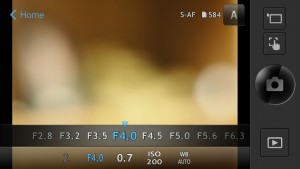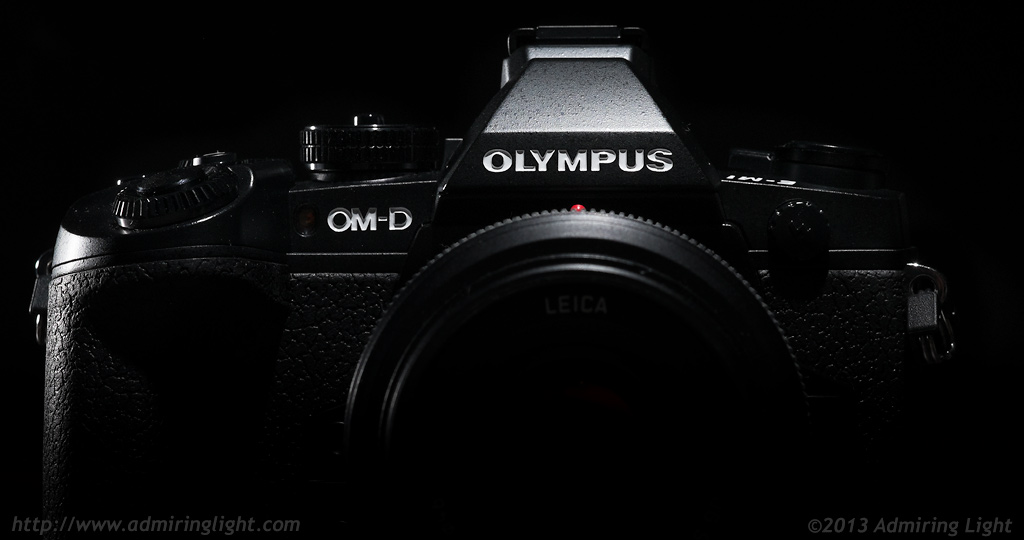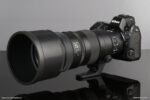Key Features: Wi-Fi

The E-M1, like almost all 2013 mirroless cameras, features WiFi capabilities. Olympus has been working on their WiFi apps and capabilities and the E-M1 comes complete with all the functionality one would expect from a top of the line product.
The E-M1 can utilize WiFi for transferring photos to your mobile device, applying GPS data from your smartphone to your photos and full remote control. The E-M1 utilizes a QR code to establish the relationship between your mobile device and your camera on initial setup. After that, you simply need to select the camera’s WiFi network when connecting the two devices.
Photo transfer works quite well and the E-M1’s excellent in-camera RAW conversion is very useful for creating JPEGs to share from the RAW files without a need for a mobile RAW converter on your phone or tablet.
The largest improvements in the Olympus WiFi implementation come in the remote control capabilities. The E-M1 allows for full remote control of the camera via their mobile app for iOS or Android. You can change camera modes, aperture, shutter speed, exposure compensation and focus point, utilizing touch foucs or the on-scren shutter button. Overall, the remote shooting works very well and opens up new creative possibilities
In-Body Image Stabilization

The E-M1 features the same ‘upgraded’ in-body image stabilization (IBIS) that appeared on the E-P5, which was a refinement of the original 5-axis stabilization found on the first OM-D. The 5-axis IBIS corrects for shift in both directions, pitch, roll and yaw, and is excellent at correcting camera shake for all lenses mounted to the camera.
Overall, the E-M1’s IBIS works very well, allow you to capture scenes a solid 3-4 stops slower than you would otherwise be able to do without the stabilization. The shot to the left was taken with the Panasonic 25mm f/1.4, which usually requires a shutter speed of around 1/50s to properly hand-hold. This shot was taken with a shutter speed of 1/4 second, handheld, allowing me to capture the motion of the waterfall without a tripod.
While the IBIS is generally excellent, it also does somewhat suffer from the shutter shock issue that I also had with the E-P5, though it isn’t as pronounced on the E-M1. Still, it is worth watching your images in the 1/60s to 1/100s range, as the IBIS can slightly soften images taken in this shutter range due to vibration of the shutter mechanism. I also tested the E-M1 against my E-M5 and generally found the E-M1 to be slightly less effective overall than the IBIS in the E-M5.
In Camera RAW Conversion
The E-M1 features built-in RAW conversion capability, allowing the shooter to change many parameters prior to creating a JPEG from the RAW file. You can pull or push exposure, adjust white balance, tone curve, color options and sharpening, for instance. This excellent RAW conversion capability combined with the WiFi options make the camera excellent for shooting and sharing high quality images on the go.
Other Important Shooting Features

The Olympus E-M1 has some excellent other shooting features, some of which are unique to Olympus cameras. Only Olympus has the truly excellent and well implemented Live Time and Live Bulb modes. These modes are used for long exposures and allow you to actually see a long exposure develop while you are taking the photo. The two modes are identical except that bulb mode operates like bulb mode on any other camera, while Live Time allows you to start the exposure with one shutter press and stop it with a second shutter press.
I’ve used these modes to excellent effect on my E-M5 and they are just as useful on the E-M1. There is nothing worse than taking a 4 minute exposure, waiting another 4 minutes for long exposure noise reduction, checking the image and discovering that you’ve just wasted 8 minutes making a severely underexposed shot. With the Live Bulb and Live Time modes, you just stop the exposure when it is properly exposed, either to your taste, or by viewing the histogram, whch also shows the current exposure in real time.
Olympus also has an excellently implemented intervalometer feature. Set the number of exposures, the duration between expsosures and start the sequence. Olympus also will automatically assemble the time lapse photos into a video immediately after the sequence is completed and record that to your memory card.
FInally, Olympus includes focus peaking on the E-M1, though it’s still a half-baked implementation. The peaking is very visible in the viewfinder, highlighting the in-focus areas. The downside is that it significantly increases viewfinder lag and it’s also not very precise – more is showing in focus than is actually in focus. I found that I could more precisely manually focus just by using the outstanding EVF without any focusing aids. The viewfinder is large enough that peaking isn’t needed very often.






Leave a Reply